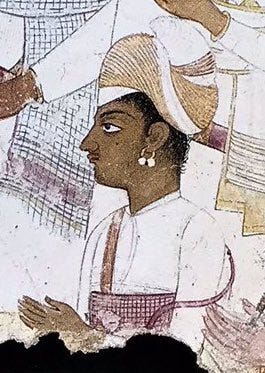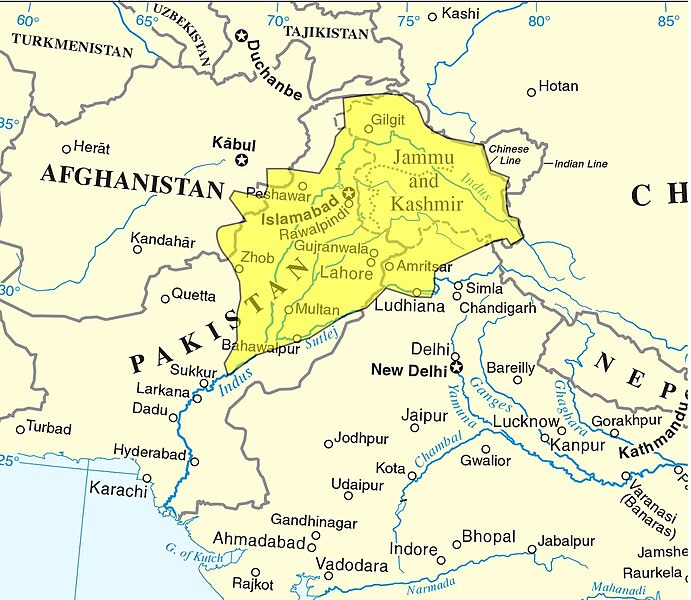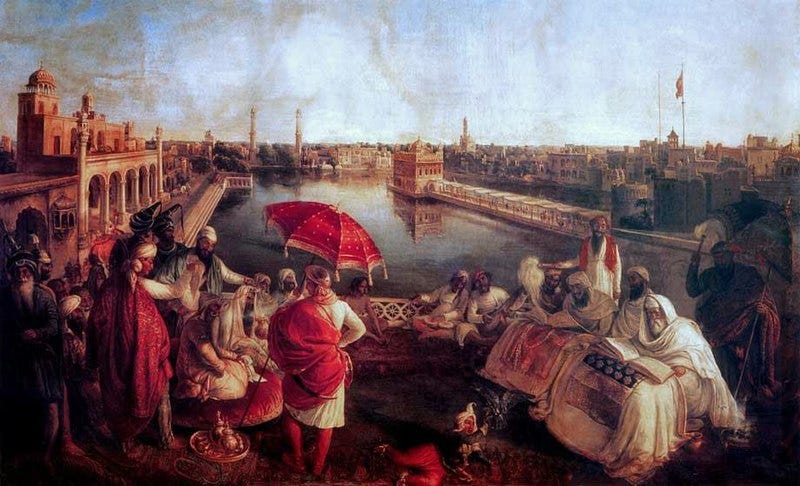Greatest Leader in History: What Can Agile Leaders Learn?
Have you ever role-modelled your leadership style upon a previous manager or boss? When I reflect on my 25-year technology career, I can count on one hand the bosses that have had a profound impact on my life.
I’ll never forget one of my first managers Omar at BT. He was the first boss to give me complete autonomy in the work that I did. I was his Head of Business Analysis and he was based in LA. One time when he was due to go on leave, he left me in charge of an entire tech function of over 150 people! Another amazing manager I had was the legendary Gabby at Deutsche Bank. She taught me many life lessons and is the only boss I broke down in tears to during my resignation. I was so emotional about letting her down and leaving her team that I cried like a baby 🥺
🏆 Greatest Leader in History Poll
But we can also look to history to seek inspiration from great leaders. A few that come to mind include Gandhi, Nelson Mandela, Queen Elizabeth and others. But what if I were to say there is a leader that you have never heard of who was officially recognised as the greatest leader in history by the BBC World Histories Magazine?
I had the pleasure of speaking to Matthew Lockwood the history scholar who was responsible for nominating Maharaja Ranjit Singh. In total, 20 scholars were asked to put forward their nominations. They were then put to the vote to 5000 readers to see who is the greatest leader in history. Maharaja Ranjit Singh won a whopping 38% of the vote to be officially crowned by BBC World Histories Magazine as the greatest leader in history.

In this article, I have summarised my conversation with Matthew Lockwood and some key takeaways for Agile teams who are looking to develop their servant leadership capabilities.
"He seemed like the sort of leader this era is missing someone who can combine tolerance with personal faith, for instance”
Contents
Background on Maharaja Ranjit Singh
Rise to Power
The Sikh Empire
Administration and Policies
Legacy and Impact
Conclusion
FAQs
Imagine a leader who united fractured territories, promoted tolerance and inclusivity, and led his people to unprecedented prosperity. Maharaja Ranjit Singh, celebrated as the "Greatest Leader in History," exemplifies servant leadership in a way that resonates deeply with technology professionals such as Agile Scrum Masters, Agile Coaches, and other leaders in the digital world.
👳🏾♂️ Background on Maharaja Ranjit Singh
Born in 1780, Maharaja Ranjit Singh entered a world full of challenges and divisions. Punjab in India was his homeland and was fragmented into numerous smaller states constantly at odds with one another. Religious conflicts, petty rivalries, and territorial disputes dominated the landscape, creating an atmosphere of tension and instability.
Adding to these societal challenges were personal hardships. Ranjit Singh lost an eye to smallpox at a young age, a testament to the adversity he faced even before stepping onto the grand stage of leadership. Despite these challenges, Ranjit Singh cultivated an unyielding spirit that would soon change the course of history.
"He was born in a difficult time and perhaps an unlikely time for a world leader to emerge, but perhaps great world leaders require difficult times to reach that status"
⬆️ Rise to Power
Maharaja Ranjit Singh’s journey to power is nothing short of extraordinary. By the age of 17, he had already started uniting Punjab under his rule, utilising a blend of alliances and military campaigns. His strategic acumen was fully tested when he seized the city of Amritsar in 1802, at the tender age of 22. This marked the beginning of a unified and flourishing Punjab.
His ability to form meaningful alliances and his military prowess were essential to his rise. But what set him apart was his vision for a unified, inclusive society. These principles grounded his leadership and established a strong, cohesive state.
"He comes to power as a very young man and in a difficult time, a time in which there are a number of empires, a number of powers in the region all jostling for control for expansion"
Key Takeaways for Agile Leaders:
Strategic Vision: Agile leaders should have a clear vision for their teams and organizations. Use strategic planning to navigate complex projects and align team efforts with overarching goals.
Building Alliances: Form strong alliances within and outside the organization. Collaborate with other departments, stakeholders, and even external partners to achieve common objectives.
👑 The Sikh Empire
Under Maharaja Ranjit Singh, the Sikh Empire emerged as one of the most powerful movements in the region. This period was defined by military reforms, cultural flourishing, and impressive administrative policies. Let’s delve into the aspects that contributed to this golden age.
🌍 Flourishing Amidst Rivals
The Sikh Empire flourished despite being surrounded by formidable rivals:
Afghan forces to the northwest
The remnants of the Mughal Empire to the south and east
The expanding British Empire to the southeast
Maharaja Ranjit Singh adeptly navigated these complexities, ensuring Punjab’s prosperity. His policies of inclusivity, tolerance, and modernisation played a crucial role.
"And so it's a difficult time. It's the time in which good leadership is necessary in which good governance is necessary"
Key Takeaways for Agile Leaders:
Navigating Complexity: Agile leaders must navigate organizational complexities and external pressures. Use Agile methodologies to adapt and respond to changes effectively.
Inclusivity and Tolerance: Promote an inclusive culture where diverse perspectives are valued. This fosters innovation and strengthens team cohesion.
🌟 Inclusion and Tolerance
A cornerstone of Ranjit Singh’s administration was inclusivity. He brought together people from diverse backgrounds and religions to form a cohesive team that helped him govern during turbulent times:
Foreign Minister: A Muslim
Finance Minister: A Hindu
Army Officers: Ethnicities and religions including Sikhs, Muslims, Hindus, Europeans, and even Americans
This diversity fostered innovation and strengthened the empire, making it a beacon of tolerance and modernisation.
"His was an empire in which Sikhs and Muslims, Hindus and Christians, South Asians and Europeans were all brought together in the administration, in the army"
Key Takeaways for Agile Leaders:
Diverse Teams: Build diverse teams to leverage a wide range of skills and viewpoints. Encourage collaboration and ensure all voices are heard.
Inclusive Decision-Making: Implement inclusive decision-making processes. Use techniques like consensus building and democratic voting to involve the entire team.
🎨 Cultural and Artistic Flourishing
Maharaja Ranjit Singh was a patron of the arts and invested heavily in cultural and religious landmarks:
Rebuilding the Golden Temple: The sacred site was restored to its grandeur.
Support for Other Religious Sites: Hindu temples and other religious structures flourished under his patronage.
These efforts not only unified the people but also created a vibrant cultural mix.
"It's also a period of cultural flourishing of artistic flourishing. He is funding and financing and supporting religion and the arts"
Key Takeaways for Agile Leaders:
Fostering Creativity: Encourage creativity and innovation within the team. Allocate time for brainstorming sessions and creative problem-solving.
Supporting Growth: Invest in team development and personal growth. Provide opportunities for learning and skill enhancement.
📝 Administration and Policies
🏛️ Multi-Ethnic, Multi-Faith Empire
The hallmark of Ranjit Singh's administration was its inclusivity. His empire was a melting pot of cultures, ethnicities, and religions. This inclusivity was not just tokenism but was reflected in key administrative and military roles, ensuring representation at all levels.
"I think Maharaja Ranjit Singh was a popular figure because he seemed like the sort of leader this era is missing"
Key Takeaways for Agile Leaders:
Representation: Ensure diverse representation in leadership and decision-making roles. Promote equity and provide equal opportunities for advancement.
Cross-Functional Collaboration: Encourage cross-functional collaboration to harness diverse expertise and drive project success.
📚 Commitment to Literacy and Education
Ranjit Singh understood the importance of literacy for societal progress. He championed education for all, creating a highly literate society. Remarkably, Punjab's literacy rates during his reign were among the highest globally, even by today’s standards.
One of his innovative strategies was to circulate a book that taught fundamental skills like mathematics and languages. People were encouraged to pass the book along once they had finished it, democratizing education.
Article on the education system under Maharaja Ranjit Singh
"His success is based on these values that I think we all hold dear and we all to some degree or another feel like may be eroding in the present"
Key Takeaways for Agile Leaders:
Continuous Learning: Foster a culture of continuous learning. Encourage team members to pursue professional development and stay updated with industry trends.
Knowledge Sharing: Implement regular knowledge-sharing sessions. Create a platform for team members to share insights and best practices.
🙋♀️ Empowerment of Women
Ranjit Singh's upbringing under the guidance of strong female figures like his mother and mother-in-law instilled in him a deep respect for women. These early influences were evident in his policies that promoted women's literacy and empowerment, a rarity for that era.
"He relies on the women in his family and in his life as real allies"
Key Takeaways for Agile Leaders:
Gender Equality: Promote gender equality and empower women within the team. Provide mentorship and support to female team members.
Inclusive Policies: Develop and enforce policies that support work-life balance and equal opportunities for all team members.
Legacy and Impact
⚔️ A Unified Punjab
When Maharaja Ranjit Singh passed away in 1839, he left behind a unified Punjab—a stark contrast to the fragmented region he had inherited. However, his death also marked the beginning of the decline of the Sikh Empire, largely due to succession struggles and increasing British interest in the region.
"He leaves a number of successors. He has a number of children and several of whom want the keys to the kingdom"
Key Takeaways for Agile Leaders:
Sustainable Leadership: Focus on sustainable leadership practices. Ensure that the team’s success continues beyond individual leaders.
Visionary Goals: Set long-term visionary goals for the team and work towards achieving them with a collaborative and inclusive approach.
🏛️ Duleep Singh: The Last Maharaja
Maharaja Duleep Singh, the last ruler of the Sikh Empire, was deposed by the British and exiled to Britain. His life represents a tragic tale of cultural disconnect and political exile, a poignant reminder of the decline of the empire after Ranjit Singh's death.
Despite being warmly received in Britain, Duleep Singh’s life was marked by a sense of loss and dislocation, culminating in his passing in Paris, far from his native land.
"He comes to the throne at a very young age. He's only five in 1843 when he succeeds to the throne of the Sikh Empire, but he's deposed by the British at 15"
Key Takeaways for Agile Leaders:
Succession Planning: Implement succession planning to ensure continuity of leadership. Identify and develop future leaders within the team.
Legacy Building: Focus on building a lasting legacy. Create systems and processes that ensure the team's success in the long term.
💪 Legacy of His Granddaughter
One of Ranjit Singh's granddaughters would go on to become a notable suffragette in Britain, championing women's rights. This continuation of his progressive values is a fitting tribute to the lasting influence of one of history's greatest leaders.
💎 Treasures and Artifacts
The wealth and splendour of Maharaja Ranjit Singh's reign are preserved in various treasures and artifacts scattered worldwide. The famous Koh-i-Noor diamond, now part of the British Crown Jewels, was once in his possession. Similarly, his grand throne can be found in the Victoria and Albert Museum in London.
These treasures serve as enduring symbols of his remarkable legacy, albeit far from the land where they originated.
"It's impossible to look at these objects and not feel a sense of the history"
Key Takeaways for Agile Leaders:
Celebrating Success: Celebrate team achievements and milestones. Recognize and reward contributions to foster a positive and motivated team culture.
Heritage and Culture: Preserve the team’s heritage and culture. Maintain traditions and values that define the team’s identity.
Conclusion
Maharaja Ranjit Singh's leadership offers timeless lessons for modern leaders, particularly those in the technology sector. His principles of inclusivity, tolerance, and servant leadership are as relevant today as they were during his reign. By studying his life and legacy, leaders can find inspiration to create cohesive, innovative, and prosperous teams.
FAQs
Who was Maharaja Ranjit Singh?
Maharaja Ranjit Singh was the founder and leader of the Sikh Empire, known for his military prowess, inclusiveness, and progressive policies.
Why is Maharaja Ranjit Singh considered the greatest leader in history?
He is celebrated for uniting a fragmented Punjab, promoting religious tolerance, and fostering a culture of inclusivity and progress.
What were Maharaja Ranjit Singh's key policies?
Key policies included promoting literacy, empowering women, and creating a diverse and inclusive administration.
What treasures from Maharaja Ranjit Singh's reign exist today?
Notable artifacts include the Koh-i-Noor diamond and his grand throne, both of which are now in British museums.
Guest: Matthew Lockwood (History Professor)
Education: BA, University of Maryland; MA Boston College; PhD, Yale University. Employment: Fellow, Yale Center for the Study of Representative Institutions; Assistant Professor, University of Warwick; Assistant Professor, University of Alabama. Books: "The Conquest of Death: Violence and the Birth of the Modern English State" (Yale University Press, 2017); "To Begin the World Over Again: How the American Revolution Devastated the Globe" (Yale, 2019) a New York Times "editor's choice" selection and a "Best Book of 2019," in the Financial Times; "Island Refuge: the Story of Exiles and Refugees in Britain from Constantine to Climate Change" (William Collins, forthcoming Autumn 2023). Media: my work has been reviewed by or appeared in The New York Times, the Financial Times, the TLS, the New York Review of Books, Atlas Obscura, the Times of London, the Times of India, and the Economic Times among other publications.
⚡️ In each episode, Paddy Dhanda deep dives into a new human Superpower to help you thrive in the age of AI.
🎧 Listen now on:
👉 Apple
👉 Spotify
👉 YouTube
★ BUY ME A COFFEE ★
☕️ If you enjoy the podcast, then you can donate a small amount here as a token of your appreciation and BUY PADDY A COFFEE 👉🏽 https://ko-fi.com/paddydhanda

















